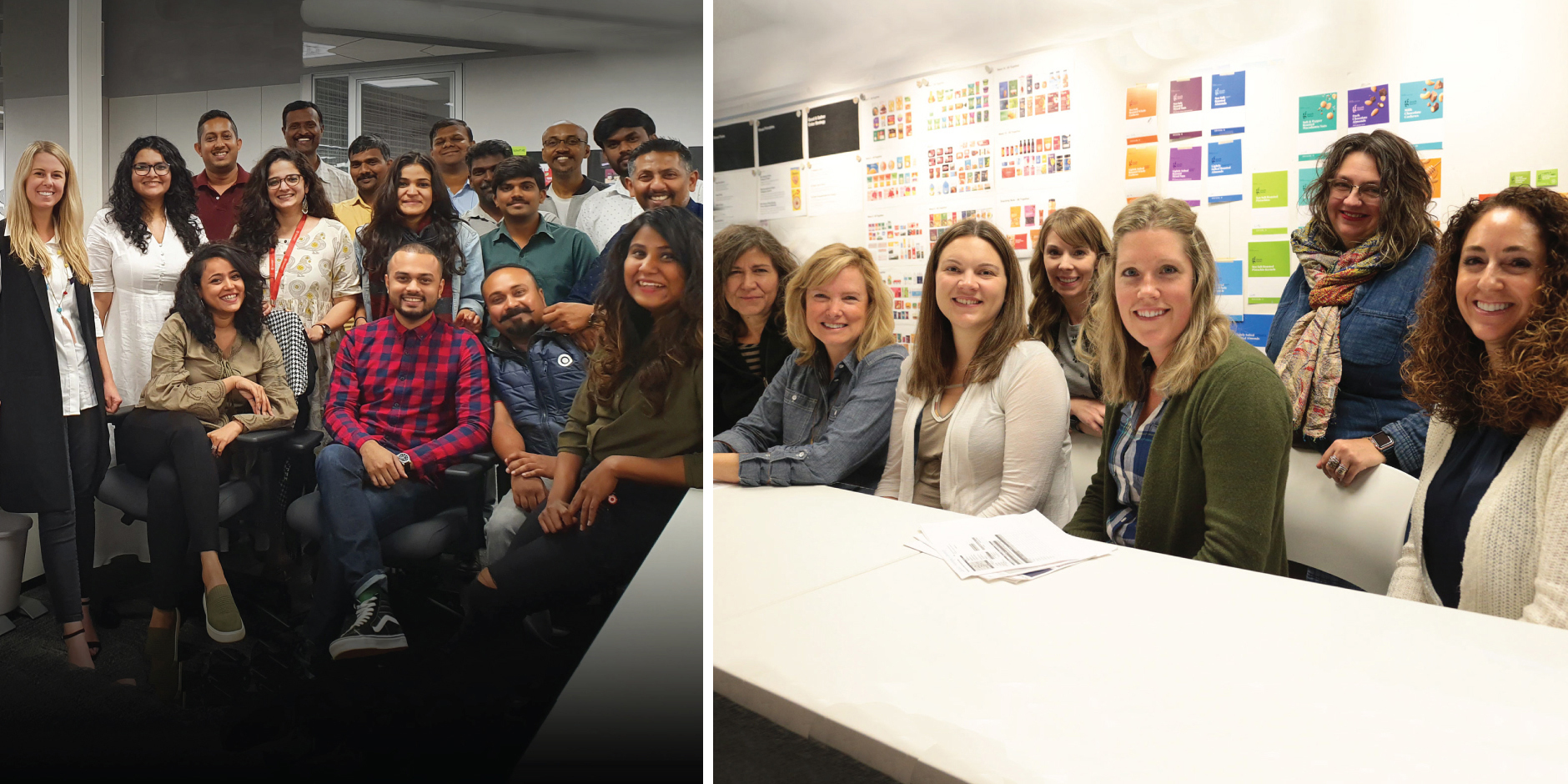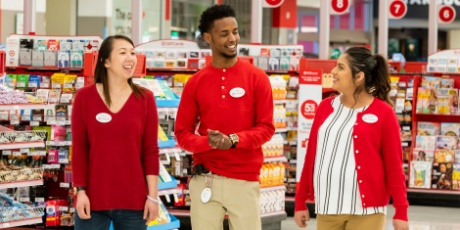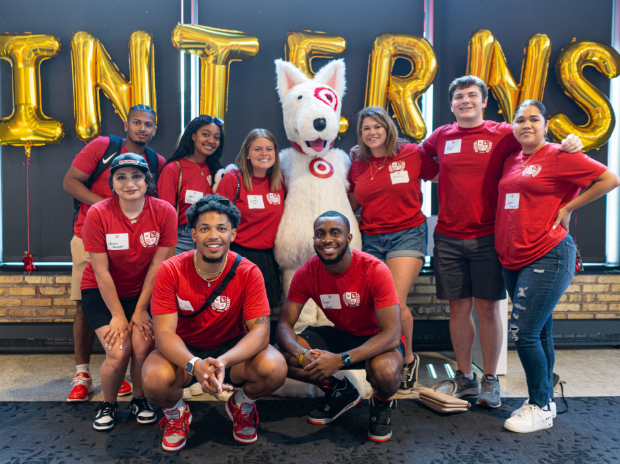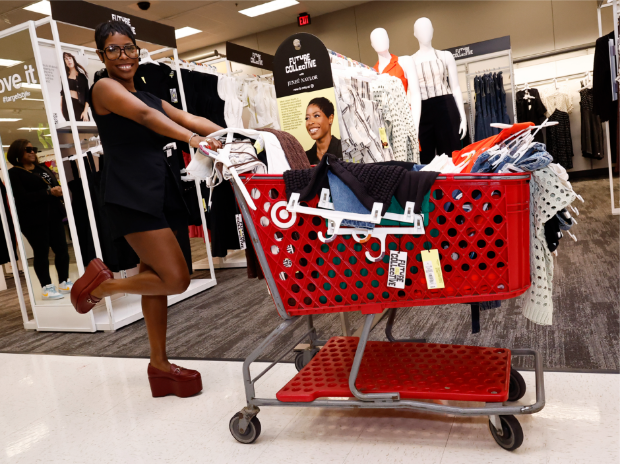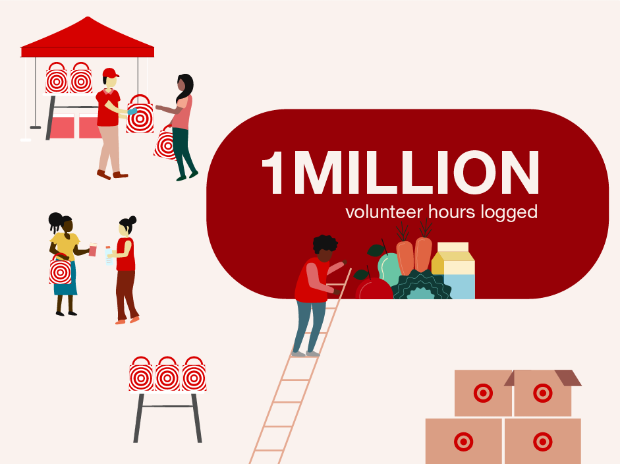When guests reach for their new favorite Good & Gather items—from vanilla almond milk to organic tortilla chips—they see affordable products bursting with quality and flavor inside cleverly designed packaging. But behind those enticing bags, boxes and cartons is a team that came together across time zones and continents to bring Target’s new flagship food brand (nearly 2,000 items in all once the rollout’s complete!) to life.
This is a taste of those efforts from a design team with members in Bangalore, India and Minneapolis, Minnesota—who lived and breathed all things Good & Gather leading up to the brand’s September 2019 launch.
So, first things first: Target has an in-house creative team called the Brand Design Lab (BDL), responsible for the naming, design and packaging of most of our guest-favorite owned brands. Think: Opalhouse, Everspring, Goodfellow & Co and more. Today, members of BDL work hand-in-hand across the globe—but that wasn’t always the case, says David Hartman, a senior director who leads a team of 25 within Target Creative at our Minneapolis HQ.
“Over the past decade, our team has developed an extensive partnership with Bangalore that supports the packaging execution process,” David explains. “But during the past year, with a lot of planning and in-person conversations, our work evolved to offer true design and production capabilities with the launch of Good & Gather—the first time we engaged this particular team to partner on the development of a food brand.”
And that’s a really big deal. Because Target’s food brands operate in a highly regulated environment that requires input from partners in nutrition, labeling, sourcing and even vendors to accurately bring packaging to life. To help take on the scope of Good & Gather, David and his team had to know the partnership with the design team in India would be one of mutual trust and collaboration. As a result? “Standing up a team to support such a large volume of work—the Bangalore team alone designed packaging for about 400 individual products—required us to develop new processes, new tools and new ways of working on both sides,” David adds.
Working Half a World Away
Even with a new workflow, the reality of day-to-day tasks can get a little tricky when one team is 10.5 hours ahead of the other. “It means a lot of early mornings and late evenings for both teams—so it’s a compromise,” says Steven Jockisch, senior manager and associate creative director. “But we also leverage frequent and in-the-moment connections, so we don’t miss out on any information sharing.” To kick off the team integration, Steven’s Bangalore counterpart, senior manager Shweta Mohare, describes how the teams came together in the beginning:
“We had team members travel and spend time with the Brand Design Lab team during the kick-off as well as the first few phases of work,” she shares. “This helped us to not just get the context to understand the brands processes, but also helped the teams in India and Minneapolis connect and drive an extremely collaborative way of working, this was key to our success. This would not have been possible without both teams integrating in a seamless manner.”
The (Organic) Juice Is Worth the Squeeze
“One of the advantages we found working with a global team in a different time zone is the ability to turn around assignments while we sleep. Sometimes this meant we could brief our partners in India in the evening and see works-in-progress from them the next morning in Minneapolis—a huge opportunity for us to help accelerate project timing,” David says. And of course, the “overnight” turnarounds could be delivered to Bangalore from the Minneapolis team as well.
With a brand of this scale, there are bound to be challenges, particularly when it comes to working with a global team. “Not everything ran smoothly all the time,” David shares. “We learned that working this way required extra planning on the part of everyone to ensure our Bangalore counterparts felt like a natural extension of our Minneapolis-based team.”
Well, was it worth it? “Without us working across both locations with a truly global mindset, this work [for Good & Gather] would not have been possible,” Shweta answers the question for us. “We shine as a team and not as individuals. As individuals we each played a part, but success would not have been possible if we had not approached it as one team. At the end of the day, it’s the team that made it all possible.”
Next up: The team is already hard at work on projects for 2020 and beyond–and we can’t wait to see what delicious designs are in store for us next (literally!).
